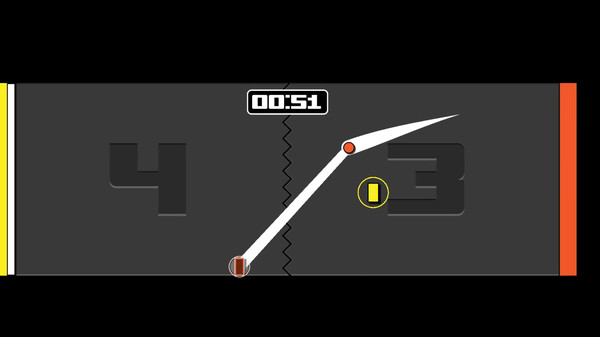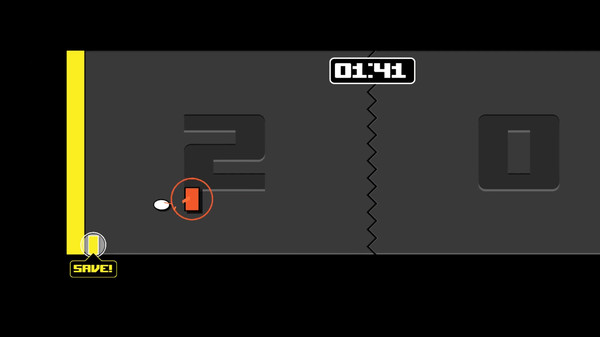Search
[{{{type}}}] {{{reason}}}
{{/data.error.root_cause}}{{{_source.title}}} {{#_source.showPrice}} {{{_source.displayPrice}}} {{/_source.showPrice}}
{{#_source.showLink}} {{/_source.showLink}} {{#_source.showDate}}{{{_source.displayDate}}}
{{/_source.showDate}}{{{_source.description}}}
{{#_source.additionalInfo}}{{#_source.additionalFields}} {{#title}} {{{label}}}: {{{title}}} {{/title}} {{/_source.additionalFields}}
{{/_source.additionalInfo}}- Details
- Category: Computer
- By Amber Gress
- Hits: 3678
Match Point (PC)

Match Point
Developed by: Jolly Crouton Media, Ltd.
Published by: Jolly Crouton Media, Ltd.
Released: October 9, 2018
Available on: Windows
Number of Players: 2-4 players
Genre: Arcade
ESRB Rating: Not rated
Price: $9.99
Thank you Jolly Crouton Media, Ltd. For sending us this game to review!
Match Point is an arcade-style local-multiplayer-only PC game. To play, the game requires a Xbox-style controller/gamepad for each player. Once all of the players join the match, they choose which team they would like to play on and move to their side of the map. Upon the game’s start, the players move around the map and use various moves to get the ball into the other team’s goal. The team has two minutes to play and score more points than the opposing team, and then a “last chance” is issued, where each team can score as many points as they can until the ball touches the ground (which is coated in red during a “last chance”), when the “last chance” ends. Then, once the game is over, each player’s results will be shown. The goal has a guard that is decently quick to regenerate, so players must first break the shield and then hit the ball into the goal shortly afterward.
The controls in the game are plenty easy to adapt to, but are still worth going over. Use the left stick to move around on-screen, A to jump (and double-jump when pressed twice), and use the right trigger to kick the ball. The left trigger is for tethering the ball, and more moves can be executed in combinations: to do a super kick, one must hold the right trigger until fully charged, and then release to perform the super kick. In order to execute a super tether, hold the right trigger to charge it, and then press the left trigger to perform a super tether. These moves all contribute to scoring points against the opposing team.
In this title, there are seven different game modes and eight different maps to play them in. The default mode – Standard Mode – is where all of the controls listed above are permitted for use in-game. Other modes, however, are less complicated; modes like Simple Mode. In Simple Mode, all of the moves except the super kick and the super tether are able to be used during a match.
Tennis Mode is a lot different to both of these game modes: Players can only stay on their side of the map (where their team’s goal is), and no tethering is allowed, along with the fact that there aren’t any guards on the goals, so points are earned a lot quicker in Tennis Mode. Moonball Mode is quite distinct as well. In it, players are unable to kick or tether the ball, so they must bump themselves into the ball to make it move. Also, the effect of gravity is lessened, hence the name Moonball Mode.

Strong Points: Multiplayer, fun gameplay, good rumble on gamepad/controller
Weak Points: No single player mode, no online multiplayer
Moral Warnings: None!
Magnet Mode, along with a few of the other game modes, is quite interesting. Once a player touches the ball, it becomes attracted to members of the opposing team. This makes it much more difficult to score points for your team. Momentum is key in Magnet Mode. Another mode that is interesting in this same aspect is Twitchy Mode. In Twitchy Mode, no moves are restricted, as in Magnet Mode. However, all players – along with the ball – become noticeably smaller and more sensitive to motion. Momentum isn’t as vital to score points in Twitchy Mode.
The last game mode available on the list is Mayhem Mode. It is as it sounds: a disaster. There are three balls that players must pay attention to, and each player is shown as white, no matter what their team color is (in every other game mode, players are shown as whatever their team color is), making it much more difficult to keep track of one’s location on the map.
The eight different maps that matches can take place in include standard, pro, volley, hoops, uneven, high, hockey, and shift. The Standard map shows the goals stretching along the walls, occupying the entire wall. In the Pro map, the goals are in the same spots, except they do not fully occupy the walls. Instead, they only cover the middle portion, making it more difficult to score points.
The Volley map mimics the way a Volleyball game functions, whereas the goals are of equal length occupying the perimeter of the floor. Because of this, it is easier to score a point, yet harder to defend your own goal. Ensuring that the ball doesn’t make contact with the ground is quite difficult. The Hoops map is similar to this, yet different in other areas. Two-thirds of each side of the map (on the floor) consists of the elevated goals. The other one-third is the space where players can stand that isn’t goal territory. Players can stand on the goal, but they don’t always need to.

Higher is better
(10/10 is perfect)
Game Score - 78%
Gameplay - 16/20
Graphics - 6/10
Sound - 7/10
Stability - 5/5
Controls - 5/5
Morality Score - 100%
Violence - 10/10
Language - 10/10
Sexual Content - 10/10
Occult/Supernatural - 10/10
Cultural/Moral/Ethical - 10/10
The Uneven map has little purpose in my opinion. Both goals are on the wall, but the goal on the left is three times the size of the right side goal. In every other map, the goals are the exact same size, but this map serves as a good map for matches with an uneven amount of players. High is a map where both goals are on the ceiling, with a small space in between them. Tethering isn’t as useful in this map, however kicking the ball is extremely helpful.
In the Hockey map, the goals are about the same size as they are in the Pro map, but the goals are closer to the middle of the map, leaving space where players can move behind the goals if need be. They cannot score from behind the goals, however, which helps replicate a hockey game even better. The last map that can be played in is the Shift map, where goals are the same size that they are in the Pro map, yet they both are constantly moving vertically along the walls in a synchronized fashion. This makes it an abundance more challenging to break the goal shield, let alone score a point.
The graphics of Match Point are as basic as they can get when it comes to their detail, however they are very colorful. Since players are shown on-screen as vertical rectangles, this is something the Atari 2600 could replicate, but when they score, the effects are really neat. Match Point’s main menu has a color scheme of yellow and orange, and I find that combination very attractive.
Sound and music heard in Match Point is very appropriate for what is going on. During a match, players will hear sort of intense, upbeat music that very much fits the situation and compliments the style of game that Match Point is. Its quality is neither exceptional nor noticeably inadequate.
As for moral warnings, there is nothing wrong with this title. It is morally perfect; people of all ages can play it. In fact, I found that playing this game with my family was quite enjoyable; it was very fun. I would recommend this game to anyone who has friends to play it with, and to conclude this review, I will say that Match Point is well worth the price.








